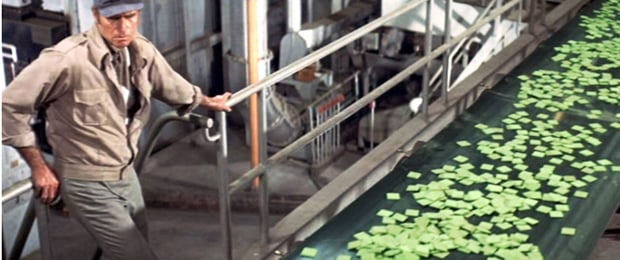Roman Mityukov wears a jacket made from plastic bottles.Image: KEYSTONE
Roger Federer’s brand is making significant efforts to design more sustainable products, particularly for the athletes in the Swiss delegation. However, the choices made are not always judicious.
09.08.2024, 18:5009.08.2024, 20:33
Simon Häring, Paris
Roger Federer’s On brand is equipping the members of the Swiss delegation in Paris. The collection, developed specifically for these Games, includes a total of 24 items. In addition to a wide selection of clothing and shoes, there are accessories such as caps, socks and training bags. A large part of the products are available at Ochsner Sport, where we can hear that the collection is “not exactly cheap”.
Jackets made from 930 kilos of plastic
The outfit worn by the athletes of the Swiss delegation during the opening ceremony of the Paris 2024 Olympic Games, during the medal ceremonies (there have been seven so far), and soon during the closing ceremony, is not, however, commercially available. These items are reserved for the athletes.
When we know that the opening ceremony on the Seine was seen by more than two billion people, we can easily understand that the Swiss brand On – present in 60 countries, notably in the United States, Germany, Japan, China, Vietnam, Australia and Brazil – invested a lot of energy in the creation of these exclusive outfits.
The jackets thus have a particular symbolism, since they are created from plastic bottles fished out of the Limmat.
This is what they look like
Roman Röösli and Andrin Gulich provide significant visibility for the On brand here.image: getty
The 930 kilos of recovered plastic waste were reduced to flakes in Thurgau and then processed in Ticino. Yarn and fabrics were then manufactured in Eastern Switzerland and a few thousand jackets were produced in Portugal.
Touched by a virtuous cycle
On paper, this process seems sustainable. But is it really? Kai Nebel, textile engineer and head of the research center for sustainability and recycling at Reutlingen University, is skeptical. Recycling is certainly better than producing the material, but the plastic has to be chemically cleaned and transported. This consumes energy and causes CO2 emissions.
Zoé Claessens, another athlete to present the On jacket on the podium.Image: KEYSTONE
For Nebel, however, the biggest problem lies elsewhere: “If you make clothes from plastic bottles, you are removing them from a functioning cycle.”
“In order for the textile industry to have this so-called sustainable material, the beverage industry must produce more plastic bottles”
When Nebel
Microplastics in water
Textiles made partly from PET (ed: polyethylene terephthalate, found in bottles) are not recyclable. To do so, the different materials would have to be separated from each other. “The costs would be disproportionate,” explains Kai Nebel.
The conclusion of the experts? Clothing made with polyester fibers is ecological nonsense.
Roger Federer and Caspar Coppetti, founder of the On brand, at the presentation of the Swiss Olympic collection.Image: KEYSTONE
What’s more, they are not without health risks. Synthetic fibres release microplastics. These end up in wastewater after washing, and in the medium term in drinking water. The exact consequences are not yet very clear. Nevertheless, it is preferable to wear clothes that do not contain synthetic fibres.
In Nebel’s eyes, brands that boast and advertise their recycled clothing are only greenwashing. It is only about stimulating sales, which only increases the mountains of waste. Because today, effects are already being produced without finding takers.
So are the red jackets worn by the Swiss athletes in Paris just another example of greenwashing? No, says Kai Nebel. This is only the case if the manufacturers are not sufficiently transparent and do not declare the proportion of recycled materials, which is often very small.
We are committed to sustainability
The company describes the fibres obtained from plastic bottles as its “current solution for conventionally recycled polyester fabrics”. However, it makes it clear that it favours advanced recycled materials wherever possible and is constantly working on innovative materials. Materials which, unlike those used in the jackets of the Swiss athletes in Paris, are not torn from a functional cycle.
More articles about sport
Show all items
The Paris 2024 Olympic Games in pictures
1 / 10
The Paris 2024 Olympic Games in pictures
Smoke resembling the flag of the French national team is seen above the Pont d’Austerlitz during the opening ceremony of the Paris 2024 Olympic Games on July 26, 2024 in Paris, France. (Photo by Lars Baron/Getty Images)
source: getty images europe / lintao zhang
But why do athletes bite their medals?
Video: watson
You may also be interested in:
Turkish boxer Esra Yildiz Kahraman, who was beaten by Lin Yu Ting in the -57kg semi-final, mimed a “double X” after the decision. It was the second time the controversial gesture had been seen in the ring.
Shot putter Raven Saunders made an “X” with her arms when she stood on the podium at the Tokyo Olympics three years ago. The sign represented “the intersection where all oppressed people meet,” according to the silver medalist. It is completely different from the one seen at the 2024 Paris Olympics.

